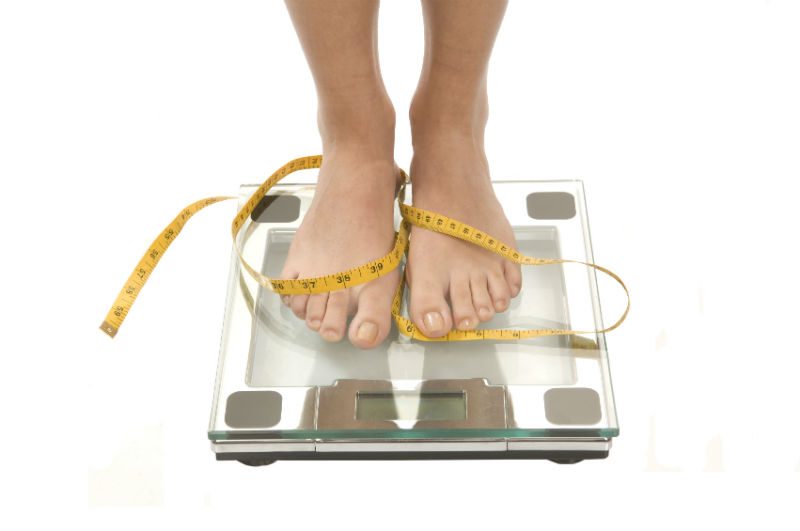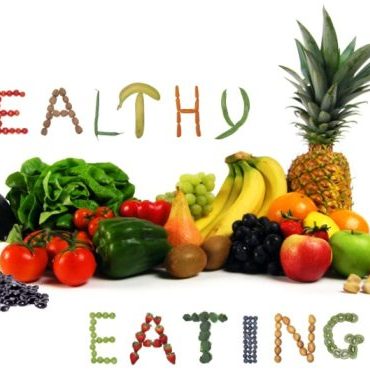
Our Resident Nutritionist keeping us up to date on all Health Related questions
Should there be a tax on fast food?
This is a very controversial topic. I can only give my opinion which is not exactly objective. Yes, I do think that the government needs to stop paying attention to all the food lobbyists and do what is right for the people. Cheap fast food and many unhealthy foods that contain unhealthy products are subsidised by the government. The government needs to make healthy fruits and vegetables cheaper so that the average person can afford to spend their money purchasing real food instead of food that will ultimately lead them to obesity and life on medication. I believe in a “Sin Tax” which is already widely applied to many substances, such as alcohol and tobacco. Food containing absolutely no nutritional value, or food that is quantifiably unhealthy, should also be subject to these taxes. By making unhealthy food more expensive, healthy food will be cheaper in comparison, which would result in more people choosing more healthy food options.
 Can you suggest what are the best ways to manage high cholesterol?
Can you suggest what are the best ways to manage high cholesterol?
Many people in the civilised world have high cholesterol. And while your doctor has probably recommended eating better, getting more exercise, and maybe even medication, you may be wondering if there’s more you can do. You’ve heard the old saying that no news is good news? Well, it doesn’t apply to cholesterol. Getting it checked on a regular basis is essential to your long-term good health. After all, high cholesterol has been linked to cardiovascular disease, the number one cause of death. Knowing your level, and tracking it as you begin treatment, just makes sense.
In a nutshell, experts recommend that adults aged 20 and over should have their cholesterol checked at least once every five years. You may require more frequent screening if you have certain risk factors for heart disease or if your test results are cause for concern. For those who have cholesterol within the normal range, knocking a few points off their readings can slow fatty buildup in the arteries and possibly reduce any buildup that’s already there. The bottom line: In the pursuit of cholesterol control, knowing your numbers is a must.
Once you’ve been diagnosed with high cholesterol, your instinct may be to jump right into whatever treatment plan your doctor recommends. Unless your cholesterol has gone through the roof — which may require an immediate intervention — you’re better off taking time to think through your situation and your treatment options. By exercising some control upfront, you’re more likely to develop a cholesterol management plan you can live with.
A good place to start? Begin with an assessment of your personal risk factors for heart disease beyond high cholesterol. Which ones are within your control? For example, you may not be able to change your age, gender, or family history, but you can improve your eating habits, get more exercise, and quit smoking. These are the sorts of lifestyle changes that should become part of your cholesterol management plan, no matter what other treatments you may choose.
Likewise, you’ll want to learn as much as you can about cholesterol itself. Your body needs cholesterol to perform certain vital functions. In fact, lowering one type of cholesterol, HDL, can be bad for your heart. What’s more, while many foods contain dietary cholesterol, most of the blame for elevated cholesterol levels rests squarely on the shoulders of saturated fat and trans fats.
Of course, you’ll also want to educate yourself about the available treatment options. Conventional medicine has much to offer people with high cholesterol — but so do alternative therapies. Before you settle on a specific treatment or combination of treatments (in consultation with your doctor), you should know whether it’s effective and safe and how soon you can expect to see results.
Try to drop those extra kilos if you weigh more than you should, slimming down may produce a significant drop in your cholesterol level. Research suggests that being overweight disrupts the normal metabolism of dietary fat. So even though you may be eating less fat, you may not see a difference in your cholesterol profile until you unload the excess kilos.
In fact, shedding just 2 to 5 kilos may be enough to improve your cholesterol level. Just don’t go the crash-dieting route. A slow but steady loss of ½ – 1 kg a week is the healthiest and easiest to maintain. Since ½ kilo equals 3,500 calories, you could meet the ½ kg -per-week rate by eating 500 fewer calories per day, burning 500 more calories per day through exercise, or — the best option — a combination of the two.
Findings from the landmark Framingham Heart Study confirm that such modest weight loss is worth the effort, for reasons beyond cholesterol control. According to the study, taking off — and keeping off — just ½ – 1 kg a year may reduce your risk of high blood pressure by 25% and your risk of diabetes by 35%.
Incidentally, many of the lifestyle strategies that help rein in unruly cholesterol can also take off unwanted kilos, and vice versa. Be sure to consult your doctor before embarking on any weight loss program.
Start exercising. Whether your goal is to lower your cholesterol, shed some extra kilos, or both, regular exercise can help you get there. I am not talking about high-intensity workouts, either, though boosting your intensity can elevate HDL cholesterol. Walking and other, more moderate physical activities are good for your heart, too. In fact, one study suggests that walks of any duration may help reduce heart disease risk. For the study, British researchers recruited 56 sedentary people between ages 40 and 66, then divided them into three groups. One group took a long, 20- to 40-minute walk each day; another group walked for 10 to 15 minutes twice a day, and the third group took 5- to 10-minute walks three times a day. Over the 18 weeks of the study, the once-a-day walkers saw their LDL cholesterol drop by 8.3%; the twice-a-day walkers by 5.8%. The researchers concluded that walks of any length can be beneficial, as long as they’re done at a moderate intensity — that is, a brisk pace at which you can still carry on a conversation.
If you’re not into walking, any form of aerobic exercise — running, bicycling, swimming, whatever gets your heart pumping — can help lower heart disease risk. Whichever activity you choose, be sure you’re doing it for 30 minutes at least 5 days a week.
If you’ve been relatively inactive, check with your doctor before launching any exercise regimen. Your doctor may be able to help you choose an activity that suits your current fitness level.
Get to know good fats as these affect your cholesterol. Peanut butter, avocados, olive and canola oils, and most nuts are high in monounsaturated fat. Research has shown that monounsaturated fat can help lower LDL and triglycerides (another type of blood fat) while raising HDL. It’s a much healthier choice than saturated fat, which is found primarily in animal products — meats, butter, full-fat milk and cheese. Saturated fat can elevate your cholesterol level more than anything else you might eat.
Also included in the good fats category are omega-3 fatty acids, found in abundance in fish such as mackerel, albacore tuna, and salmon. The omega-3s appear to lower levels of VLDL (very low-density lipoprotein) and triglycerides. Studies have shown that when people cut back on saturated fat and trans fats (found in manufactured biscuits and cakes) and consumed more fish oil, their LDL dropped. I recommend eating at least 2 servings of baked or grilled fish a week. That said, omega-3s are not a magic bullet. One study showed that when people consumed more fish oil without altering their saturated fat intake, their LDL levels stayed the same or increased. In order to reap the cholesterol-cutting benefits of omega-3s, you need to limit your saturated fat consumption.
Befriend fibre. It’s no secret that in general, vegetarians have lower cholesterol levels and lower heart disease rates than meat-eaters. That’s in part because vegetarians consume so much fibre, which is found abundantly in plant foods — fruits, vegetables, whole grains, and beans. Fibre comes in two forms: soluble and insoluble. The soluble kind appears to pack the greatest cholesterol-lowering punch. Research has shown that consuming about 15 g of soluble fibre a day can lower LDL cholesterol by 5 to 10%. It works by binding with cholesterol-containing bile acids in the intestines and escorting them out of the body. A specific kind of soluble fibre, pectin, not only lowers cholesterol but also helps curb overeating by slowing the digestive process. Munch on apples and other pectin-rich fruits, and you’re likely to eat less, lose weight, and rein in your cholesterol.
Coincidentally, foods high in fibre tend to be low in saturated fat and cholesterol, as well as calories. Just make sure you don’t top your fibre-rich whole-grain toast with a huge dollop of butter.
Prior to going on cholesterol medication make lifestyle changes to ensure whether these are sufficient to lower your cholesterol.
 What is insulin pump therapy?
What is insulin pump therapy?
If you have been diagnosed with diabetes, you may feel overwhelmed by all the new information you have learned and will continue to learn about managing your diabetes. You already know your main goal should be to get your blood glucose (blood sugar) levels under control in order to increase your chances of a complication-free life. Many people know this, but need to know how to achieve good diabetes management, while balancing the day-to-day demands of diabetes with other life demands.
An insulin pump can help you manage your diabetes. By using an insulin pump, you can match your insulin to your lifestyle, rather than getting an insulin injection and matching your life to how the insulin is working. When you work closely with your diabetes care team, insulin pumps can help you keep your blood glucose levels within your target ranges. People of all ages with type 1 diabetes use insulin pumps and people with type 2 diabetes have started to use them as well.
How do insulin pumps work?
Insulin pumps deliver rapid- or short-acting insulin 24 hours a day through a catheter placed under the skin. Your insulin doses are separated into:
Basal rates
Bolus doses to cover carbohydrates in meals
Correction or supplemental doses
Basal insulin is delivered continuously over 24 hours and keeps your blood glucose levels in range between meals and overnight. Often, you program different amounts of insulin at different times of the day and night.
When you eat, you use buttons on the insulin pump to give additional insulin called a bolus. You take a bolus to cover the carbohydrate in each meal or snack. If you eat more than you planned, you can simply program a larger bolus of insulin to cover it.
You also take a bolus to treat high blood glucose levels. If you have high blood glucose levels before you eat, you give a correction or supplemental bolus of insulin to bring it back to your target range.
Knowing how an insulin pump works is one thing. But you may be wondering where you are supposed to put it. You can buy a pump case or it can be attached to a waistband, pocket, bra, garter belt, sock, or underwear. You can also tuck any excess tubing into the waistband of your underwear or pants.
When you sleep, you could try laying the pump next to you on the bed. You could even try wearing it on a waistband, armband, legband, or clip it to the blanket, sheet, pyjamas, stuffed toy, or pillow with a belt clip.
Showering and bathing are other instances when you should know where to put your insulin pump. Although insulin pumps are water-resistant, they should not be set directly in the water. Instead, you can disconnect it. All insulin pumps have a disconnected port for activities, such as swimming, bathing, or showering. Some pumps can be placed on the side of the tub, in a shower caddy, or in a soap tray. There are also special cases you can buy. You can hang these cases from your neck or from a shower curtain hook.
No matter what you may think, you can still have fun when you are using an insulin pump. When you exercise or play sports, you can wear a strong elastic waistband with a pump case. You can also wear it on an armband where it is visible. Women can tape the insulin pump to the front of their sports bra. Some coaches do not allow any devices to be worn because getting the pump knocked into you or falling on it can be painful. In this case, you may just need to take the insulin pump off.
When you disconnect your pump, you are stopping all delivery (basal and bolus) by the pump. Here are some important tips to remember when disconnecting your pump.
It is important for you to remember that if you stop your pump while it is in the middle of delivering any bolus — it will NOT be resumed. You may need to program a new one.
Be sure to bolus to cover the basal rate you will miss. If your blood glucose level is under 150, you can wait an hour to bolus.
Do not go longer than one to two hours without any insulin.
Monitor your blood glucose every three to four hours.
Now that you know how the insulin pump works and how to wear it, take a look at some of the facts to see if this is right for you.
 I suffer from dreadful constipation. I drink at least six glasses of water a day and exercise a lot. I have tried to include a lot of fibre in my diet but perhaps I am still not having enough. Can you give me a few tips on increasing the fibre in my diet? I also suffer from dreadful headaches and feel very bloated. I am desperate to correct the problem.
I suffer from dreadful constipation. I drink at least six glasses of water a day and exercise a lot. I have tried to include a lot of fibre in my diet but perhaps I am still not having enough. Can you give me a few tips on increasing the fibre in my diet? I also suffer from dreadful headaches and feel very bloated. I am desperate to correct the problem.
Health authorities recommend that adults have about 30 grams of fibre each day. The best way to increase your dietary fibre is to eat a wide variety of plant foods – vegetables, legumes, wholegrain bread and cereals, fruits, nuts and seeds. Eat raw instead of as juice, eat the skin of vegetables and fruit whenever possible. Snack on dried fruit, raw vegetables or nuts and makeup soups using lentils, beans, peas, celery and carrots. Exercise is also an extremely important factor in managing constipation.
My daughter has put herself on a high protein diet to lose weight; it seems to be the latest diet to be on. I suffer from osteoporosis. Is it true that a lot of protein can affect your calcium absorption? I am just worried about her as I have so many problems now, and if she has the wrong diet she may harm her health in the future.
A high protein diet increases calcium excretion in the urine, which might result in reduced bone density and consequently lead to osteoporosis. A balanced diet of protein, carbohydrates and fats are preferable to a high protein diet. In addition, regular exercise helps reduce the risk of osteoporosis. Your daughter should consult a dietitian to assist her in designing a balanced meal plan to help her lose weight in a more sensible, balanced manner.

